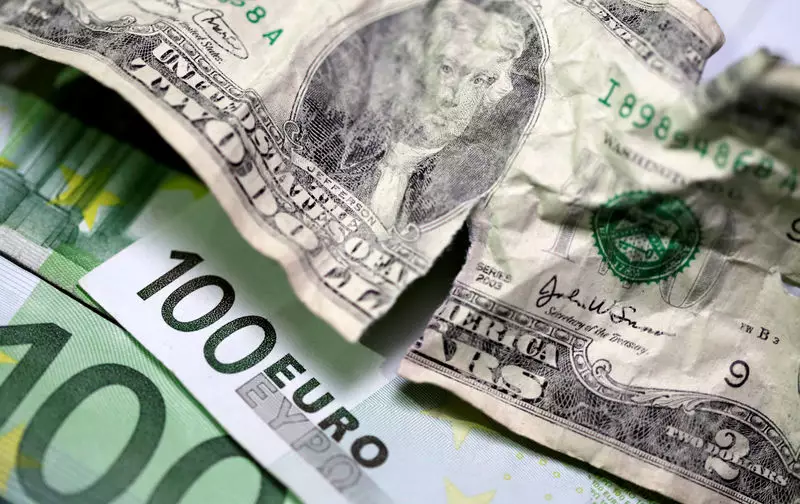The currency market has once again displayed its volatility, with the US dollar reaching impressive heights, while the euro faces a significant downturn. On financial platforms like Investing.com, observers note that the Dollar Index, which measures the greenback against a basket of six major currencies, has surged to levels not seen since early October 2023. It is essential to delve into the factors driving these trends, examining both the ramifications of recent geopolitical tensions and shifts in economic indicators.
The US dollar’s ascent to new peaks can largely be attributed to two key factors: political dynamics and labor market data. Following Donald Trump’s election victory, market sentiment shifted markedly, anticipating fiscal policies that could spur inflation while simultaneously narrowing the Federal Reserve’s scope to lower interest rates. Predictions of tighter monetary policy typically strengthen a currency, as higher interest rates tend to attract foreign capital seeking better returns.
Additionally, recent employment statistics exhibit an unexpected resilience in the labor market, which lends credence to a positive economic outlook, at least in the short term. Initial jobless claims have seen a decrease, indicating a robust job market, which supports the notion that the Fed may hesitate to adopt more accommodative policies immediately. Analysts from financial institutions, including ING, indicate that statements from influential figures like New York Fed President John Williams—even those that downplay immediate inflation risks—have played a role in encouraging dollar buying.
In parallel with these domestic factors, global uncertainties, particularly the escalation of the conflict between Russia and Ukraine, have bolstered investments in safe-haven assets such as the US dollar. As violence and instability increase, investors frequently gravitate towards currencies perceived as stable and reliable. The dollar’s safe-haven status is currently amplified, leading to a marked rotation in market sentiment. Analysts from ING highlight how heightened tensions in Eastern Europe further favor the dollar amidst fears and uncertainties in the global landscape.
Conversely, the euro has suffered greatly in light of poor economic data and a bleak outlook for the eurozone region. This has resulted in a significant depreciation against the dollar, with the EUR/USD pair recently falling to its lowest level in two years, declining by 0.8% to about 1.0389. Indicators of economic health, such as the Purchasing Managers’ Index (PMI), have revealed disconcertingly low figures, with the overall PMI dropping to 48.1—indicating contraction in business activity throughout the bloc.
The deteriorating conditions in the eurozone can be traced back to both internal and external pressures. The region’s manufacturing sector appears to be sinking deeper into recession, and services, historically a strong pillar of economic performance, have also faced setbacks. Moreover, adjustments to Germany’s GDP growth figures—revised downwards to a mere 0.1%—suggest a frail recovery for Europe’s largest economy, putting additional pressure on the euro.
The difficulties plaguing the eurozone seem to resonate across the English Channel, with the British pound also facing declines. The GBP/USD exchange rate fell by 0.4%, marking its weakest position against the dollar since May 2023, due to contractions in British business output. The preliminary flash composite PMI in the UK now stands at 49.9, signaling a disturbing shift below the crucial growth threshold, further contributing to the pound’s vulnerability.
With inflation figures in Japan slightly exceeding expectations, the dynamics within the USD/JPY pair indicate a contemplation of future interest rate hikes by the Bank of Japan, demonstrating that currency movements are not solely driven by US and Eurozone factors.
The contrasting trajectories of the US dollar and the euro can be attributed to a combination of political expectations, favorable labor market statistics, and deteriorating economic conditions in Europe. As geopolitical tensions simmer and economic indicators fluctuate, market participants are poised for continued volatility. Investors must remain vigilant, evaluating data as it emerges, to navigate these turbulent financial waters effectively. The current landscape underscores the importance of understanding both macroeconomic indicators and geopolitical developments when assessing currency valuations.

